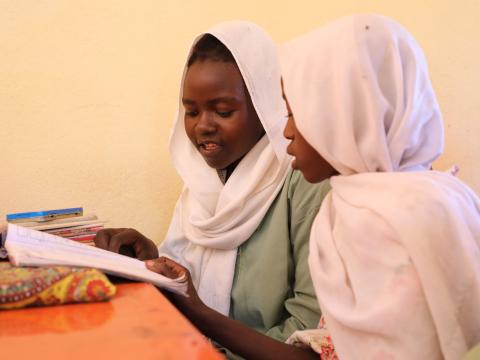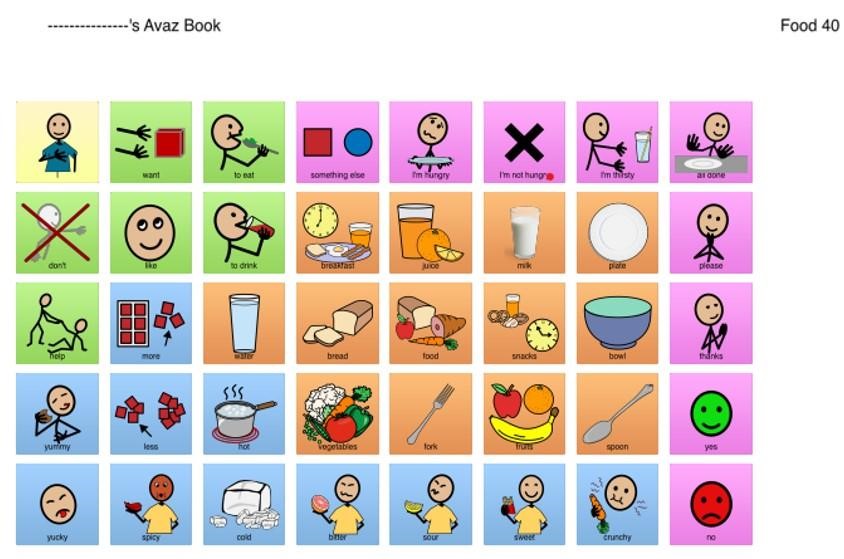Four mobile applications which can lower barriers for children with disabilities and close gaps in SDG achievement

By Marie-Rose Ntawiha (Humanity & Inclusion), Shelly Hartman Sunyak (World Vision US ), Elisabeth Wilson (World Vision US)
As we, the collective global community, unite in action to achieve the Sustainable Development Goals (SDGs) for, with, and by persons with disabilities – only seven of the 169 SDG targets specifically address disability inclusion and only 10 of the 231 SDG indicators explicitly require disability data disaggregation. However, even without specific SDG data, the extent of progress must be called into question when we see that, in 2023, the 1.3 billion people worldwide who experience significant disability, still face a range of barriers to inclusion. Assistive services and Assistive Technology are a critical part of the “blueprint” for alleviating barriers and enabling persons with disabilities to receive inclusive and equitable quality education in order to fully participate in society. Assistive Technology (AT) is officially defined as - any item, piece of equipment, or product system, whether acquired commercially or off-the-shelf, modified, or customised, that is used to increase, maintain, or improve the functional capabilities of an individual with a disability.
In an education setting, inclusive, assistive technology can address seating, positioning, mobility, reading, writing, computer access, communication, mathematics, organisation, vision, hearing, recreation and leisure, feeding, etc. According to the Student, Environment, Tasks and Tools ( SETT) Framework the following process should be followed when selecting appropriate assistive technology for everyone:
- Consider Assistive Technology for each student with a disability.
- Evaluate Assistive Technology for individual students.
- Document the Assistive Technology recommended for the student.
- Provide training and professional development.
- Engage families to provide essential insights and to support the student at home.
- Ensure assistive technology choices are driven by the student, not the device.
Assistive Technology, accessible materials and Universal Design for Learning (UDL) are critical for students with disabilities to access education and ultimately achieve universal quality education for all. However, in most low-income countries, scarce resources and insufficient training present a massive gap in access to and integration of each of these components. It is estimated that less than 2% of the 34 million children who are deaf worldwide receive early childhood exposure to a signed language. Most children who are deaf are, therefore, at risk for language deprivation during the critical period of language acquisition in the first five years of life.
USAID’s Uburezi Iwacu (Homes and Communities) project in Rwanda, implemented by World Vision with partners Imbuto Foundation and Humanity and Inclusion, is leading the way in closing this gap in Rwanda. Uburezi Iwacu recently introduced assistive tools to practically support students with disabilities develop communication skills, enabling them to have stronger advocacy.
Through workshops for parents, teachers, and therapists across four districts in Rwanda, Uburezi Iwacu introduced children and their families to open-source technologies that can be used to support learners with communication and speech disabilities.
Participants tested four apps that can be easily used on smartphones and tablets:
- Live Transcribe captures speech and displays it as text on a device’s screen that learners who are deaf or hard of hearing can read.
- ALEXICOM and Symbol Talk—based on Augmentative and Alternative Communication (AAC)—display images and icons associated with words and phrases on a device’s screen. Learners can select those images or icons to “talk” through their devices. These applications are mostly used by children with speech and communication challenges.
- Envision is a tool that “reads” what learners scan with their smartphone or tablet one word, sentence, or paragraph at a time. This tool is used by children who are blind or have other disabilities.
Those who attended the Uburezi Iwacu workshops were encouraged to learn about these practical tools and decided to begin using them with their children and students immediately! Parents proactively downloaded the apps on their personal devices. School administrators said these tools can be used to effectively reinforce what students are learning in school.
Beyond Rwanda, the lessons learned were shared with other World Vision programmes, in Malawi for example, where World Vision is working to improve disability service provision across the country. These ATs, as well as others like Cboard with customisable symbols and language, are integrated with a comprehensive case management tool and targeted partnerships with service providers and organisations of persons with disabilities to improve gaps in service provision which will ultimately contribute to improving progress towards achieving the SDGs. See an example of a C Board below:
